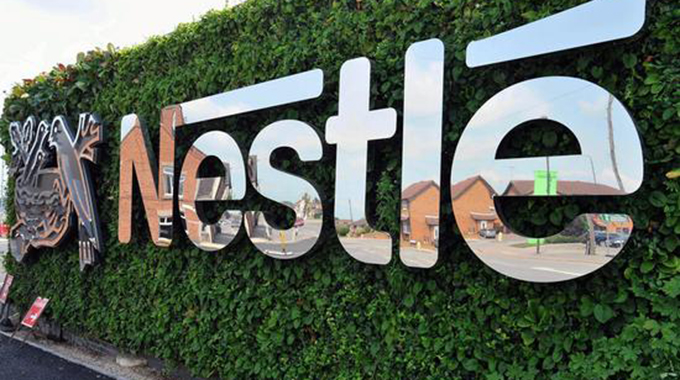Nestlé in initiatives to boost milk output

Tawanda Musarurwa and Elita Chikwati
Food and drink processor, Nestlé Zimbabwe’s dairy farmer initiatives across the country will help boost the country’s national dairy herd, with the latest Watershed Small-scale Farmer Hub showing incremental gains since its launch last year.
Watershed Small-scale Farmer Hub was registered in Hwedza last May, just as Covid-19 hit the country.
The group started milking about 2 500 litres per month and by December its farmers had grown their milk volumes to about 11 000 litres per month.
And Nestlé Zimbabwe says it expects the group to grow their volumes this year by at least 50 percent.
Speaking in the context of World Milk Day, Nestlé East and Southern African Region (ESAR) corporate communications and public affairs director Saint-Francis Tohlang, said the dairy farmers support initiative, which stretches back to 2011, has broader social and economic impacts.
“Our long-term commitment to our dairy farmers has been secured over the years with the launch of the Nestlé Dairy Empowerment Scheme (NDES) in 2011. The NDES programme has evolved over the years to focus on agripreneurship.
“We support our dairy farmers and farming partners to be Agripreneural or have the Agripreneurship mindset. Agripreneurship creates sustainability and at a large scale, creates economic opportunities and social impact in rural communities, which is part of our Nestlé vision and purpose.
“Prior to the onset of the NDES, dairy farmers faced several challenges that included lack of technical support, low dairy herd, poor feeding, water challenges and lack of support on milk collection centre’s. At the start of the programme, we had no small-scale farmers, and we began to build these from 2015,” he said.
“We are happy to report that we now have three small-scale farmer groups, Chitomborwizi in Mashonaland West, Watershed in Hwedza, and Agro Prosperity Trust in Marondera. These groups have almost 70 individual dairy farmers in total.”
“Dairy farmers still face challenges today, some of which have been worsened by the onset of Covid-19, however, through consorted efforts under our scheme, we are making steady progress despite additional challenges brought about by Covid-19.”
Zimbabwe currently has a significant milk deficit, national demand standing at 120 million litres, while national production stood at 77 million litres in 2020.
In the early 90s Zimbabwe used to produce about 440 million litres of milk a year, and the figures dropped to a low of about 35 million litres a year.
Speaking at a tour of Nestlé Zimbabwe’s Harare factory, corporate communications officer Yamurai Zhou, said the ongoing initiatives will also help the company increase its production at its milk segment.
“In terms of our processing capacity, we are able to process 45 million litres of milk a year. And right now we are receiving an average of 740 000 litres.
“These initiatives will help cover the deficit at national level, as well as meet our factory requirements,” she said.
Some of Nestlé’s initiatives towards building the national herd include: the establishment of milk collection centres across the country, setting up of solar-powered boreholes to address water challenges for irrigation, and provision of pasture and silage support to reduce commercial feed requirements (especially insofar as feed constitutes about 75 percent on the cost of production per litre of milk).
The group is also setting up solar-powered cooling system to reduce reliance on electricity and diesel for power generation, and as well knowledge-transfer to dairy farmers.
Although national milk production declined by 7 percent to 17,8 million litres in the first quarter of this year, Zimbabwe is targeting to produce 85 million litres of milk this year, against the national requirement of around 120 million litres.
Currently, Zimbabwe imports approximately 48 percent of its annual milk requirements.











Comments